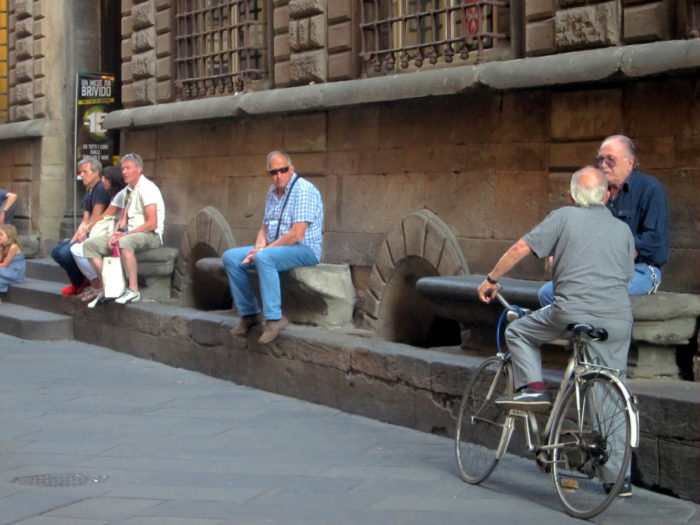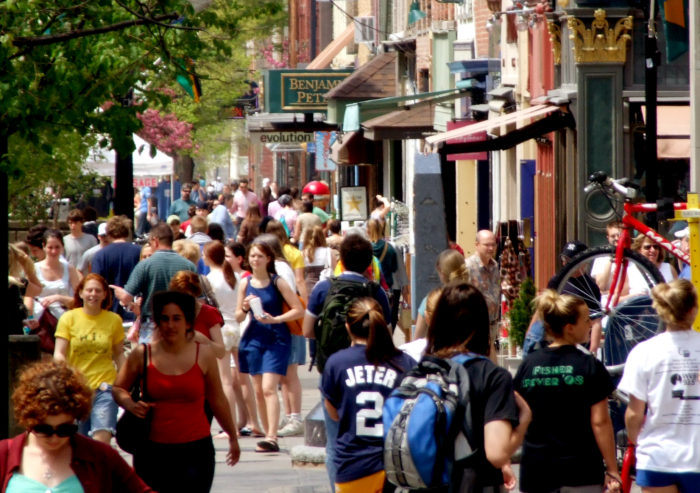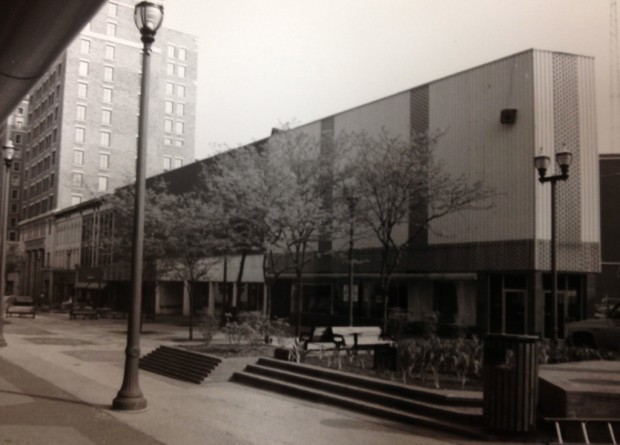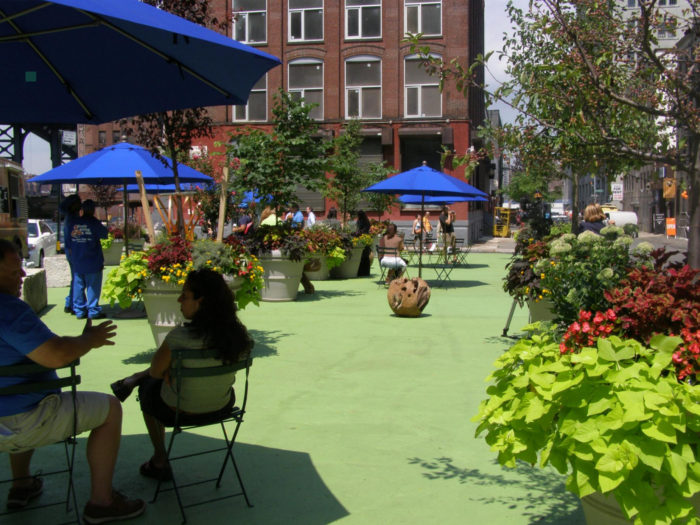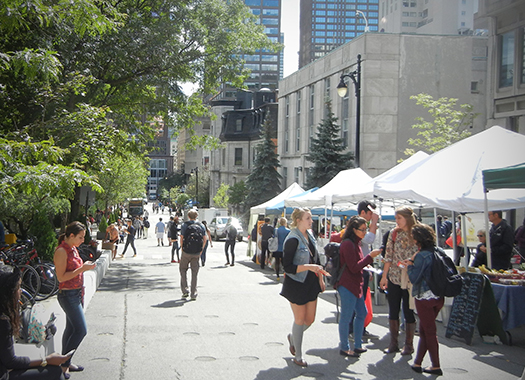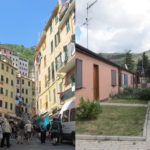THE WORLD’S BEST CITIES HAVE PEDESTRIANIZED DOWNTOWN STREETS. BUT PEDESTRIANIZATION CAN STILL RUFFLE FEATHERS.
New York City’s pedestrianized Times Square, Burlington Vermont’s Church Street (pictured above), Boulder Colorado’s Pearl Street Mall. We know a great public space when we see it: Car-free, surrounded by a dense assortment of shops and homes, easy to get to, and well-maintained. Deny society public space and isolation, depression, and financially instability increases. Provide public space and citizens become more connected, happy, and prosperous.
Many American cities’ leaders and citizens are waking up to the need for more public space and specifically the necessity to pedestrianize key streets. This is a turnaround worth celebrating after decades where streets’ value as social fabric-builders was crushed underneath the blind and stupid pursuit of mobility first and mobility only.
Cities differ in how boldly they’re embracing this new path. Most are still dipping their toe in the water with a parklet here, a curb extension (“bulbout”), wider sidewalk, or a one-day event there, expanding the pedestrian realm but at a slow piecemeal rate. A small cadre of cities are going bold and pedestrianizing whole swathes of street space for the people. Currently at the head of the American pack, New York City has not only pedestrianized Times Square but has created dozens of smaller gathering spaces around the city at places like the Pearl Street Triangle in Brooklyn. And many other cities – including LA, San Francisco, and Chicago – are also mulling similar transformations.
By definition, public space works when it’s done right. And yet, the detractors will protest “It won’t work this time, not here!” Around the world the resistance to pedestrianization tends to revolve around the five objections outlined below. Advocates must anticipate these arguments and work to address them.
Even if you believe the evidence doesn’t substantiate skeptics’ claims, saying “I think your objections are wrong and here’s why” won’t convince opponents. Their fears must be addressed and, as we explore later, there should also be a new process that prevents opponents easily squashing public space proposals while allowing ideas to be tested before being made permanent. If pedestrianization advocates like you and me propose reasonable solutions and there’s enough support behind a proposal the stage is set for dreams to become reality.
Let’s explore the top 5 objections to pedestrianization…
1. IT WILL ATTRACT VAGABONDS
The concern: From homeless people to errant teenagers, the unsavory are waiting to set up camp in the newest public space, transforming it and the surrounding neighborhood into a rundown shantytown.
The reality: Do more down-and-outs come to and overwhelm new well-designed public spaces? The most common answer to that two-pronged question is yes and no: More come but they don’t dominate. To cite a typical example, on any given day there’s always a couple of disheveled folks (who have every right to be there) hanging around the excellent Patricia’s Green in San Francisco. But a public space as popular as this attracts all kinds of other people to save it from becoming overwhelmed. Great public spaces draw all kinds of visitors which prevents the establishment of an unhealthy social monoculture.
How to address this concern: Work with the local police station to increase beat cops in the area, at least in the public space’s early days. Contact the city homeless outreach department to send staff to council homeless people who use the space a lot. Create a Community Benefit District to maintain the space. Post contact information at the public space for people to use if they witness inappropriate behavior. And make the space as well-designed and popular as possible!
2. THE TRAFFIC WILL BE TERRIBLE
The concern: Removing streets or reducing their capacity will cause traffic to spill over to neighboring streets and bring traffic to a standstill.
The reality: So common is this belief we previously dedicated an entire article to the subject. If congestion gets worse it only does so temporarily as people adjust their mobility habits over time, bringing congestion back to equilibrium. A study of 60 cases worldwide concluded that when streets are narrowed or removed an average of 20% of the traffic that once used those streets is not displaced elsewhere, it simply vanishes. People choose to get around another way instead.
How to address this concern: To cut down on traffic generated by parking-hunting, a major source of traffic, make sure the cost of parking in the area changes throughout the day based on demand to ensure that 15% of spaces are available at any one time. Make sure traffic rules (eg. left-turn bans, etc.) in the area are reconfigured to let people drive around the pedestrianized area. A commonly-suggested solution is adding parking nearby; avoid this approach if possible because extra parking increases driving, leading to more congestion for which the pedestrianized space will be blamed.
3. THE PHYSICALLY INFIRM WILL SUFFER
The concern: During one public space project with which I was involved someone objected to the idea because “Elderly people visiting the post office won’t be able to park outside.” After all, don’t people with physical limitations need their cars the most?
The reality: Visit any great public space and you’ll notice a disproportionate number (relative to their numbers in society overall) of older folks and other age groups with physical limitations…
Folks with disabilities, many of whom can’t drive in the first place, love public space. It’s where they can more easily enjoy their time with friends and continue to be a part of society. Pedestrianizing streets would in fact most benefit this demographic.
How to address this concern: Increase the number of nearby disabled parking spaces. Grant permits to allow a small number of people, such as residents on the block, to drive at walking speed down the pedestrianized street.
4. IT WILL HARM BUSINESS
The concern: Local businesses on a newly-pedestrianized street will be forced to locate or close because loading vehicles will be blocked and customers will have fewer parking options.
The reality: Successful, pedestrian-only public spaces are in fact the world’s finest commercial environments. Potential customers move at walking speed and are much more likely to notice new businesses. People are so desperate for pedestrianized places that they’ll travel around the world to spend their holidays in pedestrian-only streets, plazas, and cruise ships. The merchants there are doing gangbusters.
How to address this concern: Allow loading vehicles to access the space early in the morning. Create a small number of merchant-only parking spaces nearby. Make sure merchants are part of a pedestrianization project and that your team visits them regularly to keep a dialogue open. Work with merchants to promote their business and to organize events that will bring people to the area. This article explains more on helping merchants to be open to change.
5. PEDESTRIANIZED STREETS FAILED IN THE PAST
The concern: From the 1950s to the 1970s, about 200 pedestrian streets were created across the US. By the early 2000s, all but about 15 of these malls had been opened back up to vehicular traffic, leading some people to conclude that “Americans don’t like pedestrianized streets” and even “Americans don’t gather”.
The reality: Those malls failed, not because of their inherent unsuitability in America but partly because of a lack of understanding at that time about what makes public spaces work and partly because of anti-urban trends going on in American cities during that era. Many malls were zoning victims, located in commercial-only downtowns, unable to benefit from the lifeblood of residential foot traffic, and often surrounded by too many parking lots. Some were part of city centers that were dying because of the flight to suburbia and the emergence of strip malls on the edge of town. (Kai Bates’s excellent master’s thesis Making Pedestrian Malls Work further explores speculation about why the malls failed.)
How to address the concern: Pedestrian streets work when they follow the laws of good public space: Being located where the action is (in a mixed commercial-residential environment where lots of people go), surrounded by varied destinations, moderately sized, offering plenty of things to do, and well-maintained. Now that many Americans are moving back to cities, the chances of pedestrian malls succeeding are higher than ever.
TESTING OBJECTIONS WITH A TEST RUN
Pedestrianization advocates need to anticipate objections. But don’t think this will win over all skeptics. Most people make up their minds immediately upon hearing an idea. Only a small minority are open to further evidence.
I’ve a hunch that most opposition to pedestrianization is based on the difficulty of imagining change. People shouldn’t have to just imagine change, they need to see it.
To address this, I propose that cities adopt the following system to trial pedestrianization ideas on a temporary basis:
- Any pedestrianization proposal is accepted if accompanied by a specific amount of signed support. 51% of residents and businesses within a two block radius seems reasonable.
- The city chooses the five proposals (or however many the pilot program’s budget will allow) with the highest amount of support and conducts a study sufficiently detailed to address basic issues (people will be safe, drivers can access their homes, public transit will be unaffected, etc.) but not as resource-intensive as that required for permanent projects.
- Each proposal is tested for 12 months using temporary materials from a city-owned repository, during which time various impacts are measured, such as business revenues, safety, and travel times.
- If a project is successful according to the above measurable factors and has more than 60% support from the 2 block area, it stays and is upgraded with more permanent materials when funds materialize.
Many US cities are starting to pilot more modest ideas, such as street corner “plazas” and protected bike lanes, using temporary materials. The above proposal would make full pedestrianization piloting possible in any city on an ongoing basis.
LET GREAT IDEAS SHINE
Society is buzzing with great ideas for new public spaces. Usually, skeptics too easily shoot down those ideas. At the same time, people should be able to see and experience an idea before committing to it for eternity. Cities are idea laboratories and it’s time to unleash this potential upon the critical need for more public space.

